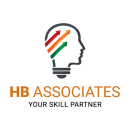Lecture
Good day! There are some videos of our lectures. Feel free to contact us if you want to learn more.
When it comes to purchasing and paying for products or services, there are various steps that you need to take before finalizing the transaction. First and foremost, you need to identify which product or service you want to purchase and ensure it meets your needs or requirements. Once you have made a decision, you can proceed to the payment process. Depending on the vendor’s options, you can pay by cash, debit or credit card, wire transfer etc. Be sure to check the vendor’s accepted payment methods before initiating payment. To complete the transaction, you need to ensure all information provided is accurate and confirm that you agree to the terms and conditions of the vendor.
To learn more you are requested to attend our class.
When making a purchase, it is important to consider all of the costs involved. This includes the value-added tax (VAT) and any taxes that may be applied to the purchase. While some prices may be listed without VAT or tax included, it is important to note that the final cost of the item will likely include these fees. As a consumer, it is important to take the time to calculate the total cost so that you can make an informed decision about your purchase. On the other hand, when a price is listed as including VAT and taxes, you can have peace of mind knowing that there will be no additional fees added on at the time of purchase.
To learn more you are requested to attend our class.
Bangladesh Government has implemented new rules about Value Added Tax (VAT). These rules apply to businesses and sellers operating in Bangladesh. The changes involve how and when businesses collect and pay VAT to the government. It is important for businesses to understand and comply with these rules in order to avoid any penalties or legal consequences. VAT Calculation and deduction is crucial for any kind of business.
To learn more you are requested to attend our class.
Bank Reconciliation is important for businesses handling money. It means checking records to make sure they match the bank’s record. This helps to catch any mistakes or problems. The process involves collecting information, checking the data and fixing anything that is wrong. This includes looking at bank statements, deposits and fees. Bank Reconciliation is crucial for keeping track of a company’s financial information. It helps to make sure the financial records are correct. This is important for accounting and finance and for making sure the money is managed properly. Doing Bank Reconciliation regularly can help to catch mistakes early and stop any bad behavior.
To learn more you are requested to attend our class.
Adjusting entries correct financial records at the end of an accounting period, and they can ensure accurate financial statements. Common adjustments include accruals for unrecorded income or expenses, prepayments for future periods, depreciation for fixed assets, inventory changes, bad debts, tax liabilities, and capitalization of expenditures.
To learn more you are requested to attend our class.
A debit balance refers to the total amount owed by an individual or company in a financial account. The debit balance is calculated by adding up all the debits in an account and subtracting the credits. This means that more money has been spent or withdrawn than has been deposited or added to the account.
On the other hand, a credit balance refers to the amount of money available in an account after all debits have been subtracted from the total credits. This indicates that more money has been deposited or added to the account than has been spent or withdrawn. A credit balance might also refer to a positive account balance or a surplus in a financial account.
To learn more you are requested to attend our class.
Knowing the four categories of accounts – assets, liabilities, expenses, and income – is crucial in accounting. These categories help track financial transactions and prepare accurate financial statements. Assets are resources that will provide future benefits, liabilities are debts or obligations to pay, expenses are business costs, and income is revenue from sales. It is important to understand these categories for informative financial reports that aid in business decisions.
To learn more you are requested to attend our class.
Personal branding is developing and marketing oneself by identifying unique values and communicating strengths to differentiate from others. It builds trust and credibility, enhances career opportunities, and requires consistent effort through social media platforms, personal websites, blogs, and networking events. It pays off in the long run by opening doors to new opportunities and enhancing career success.
To learn more you are requested to attend our class.
